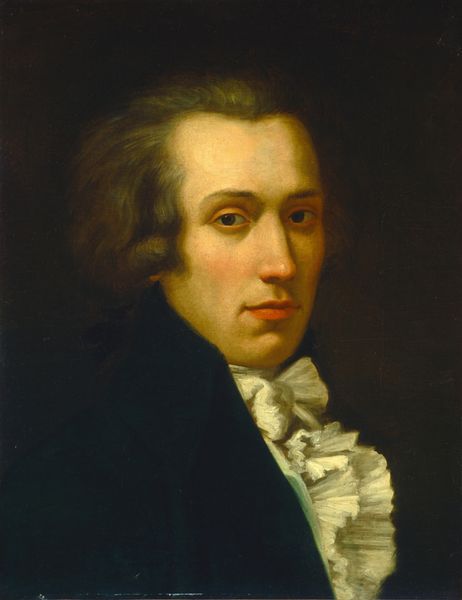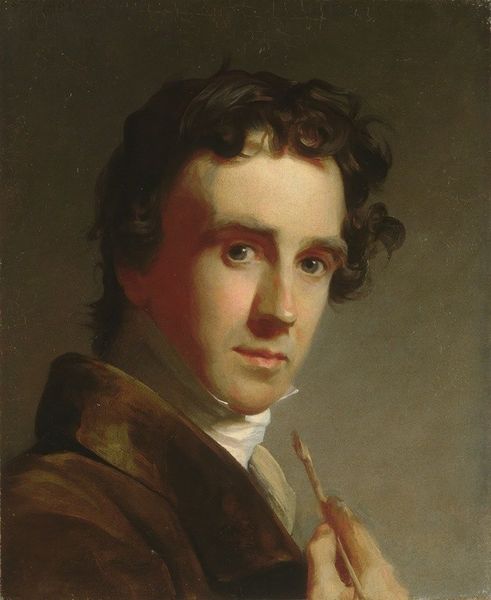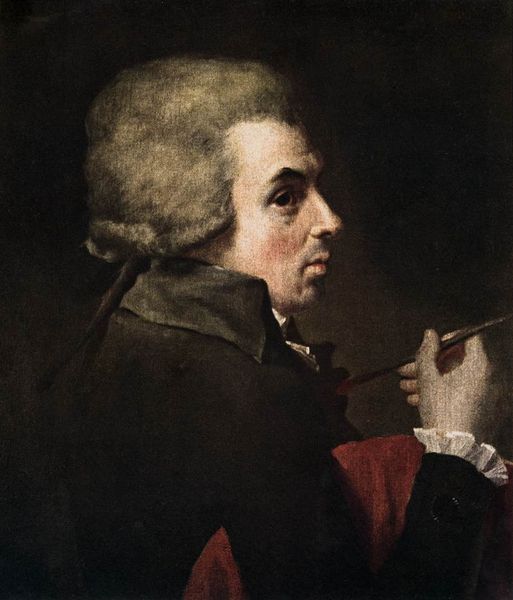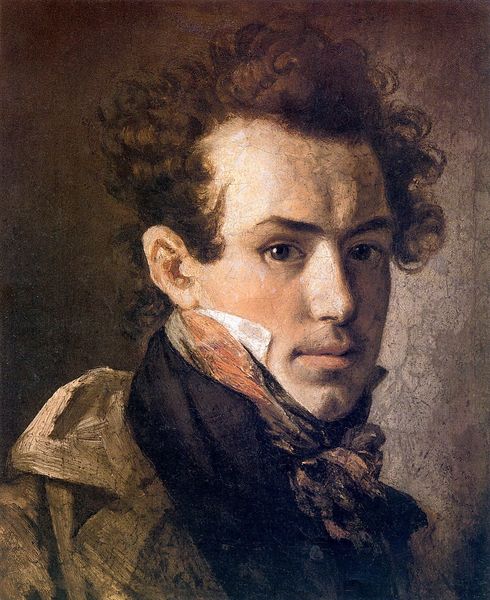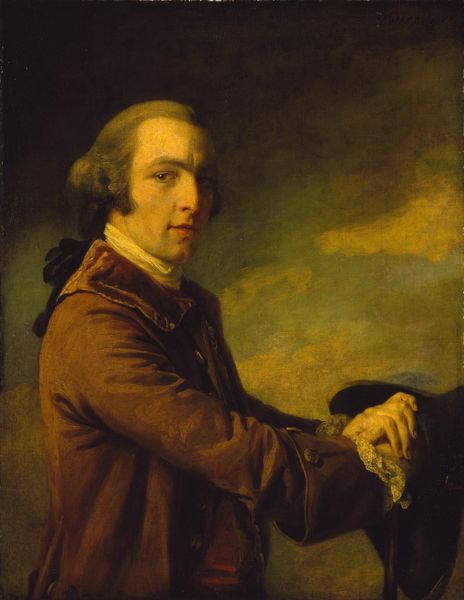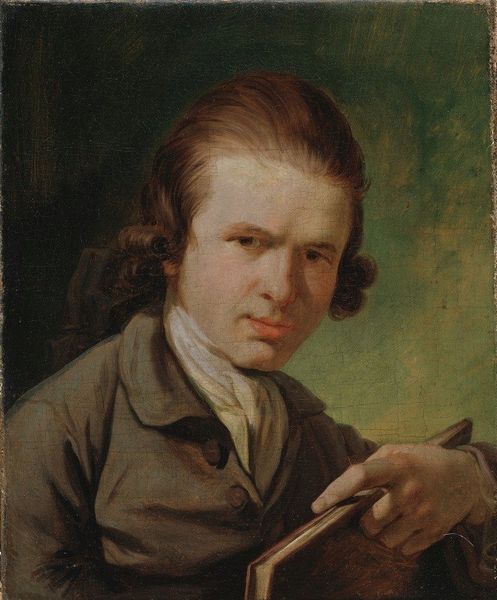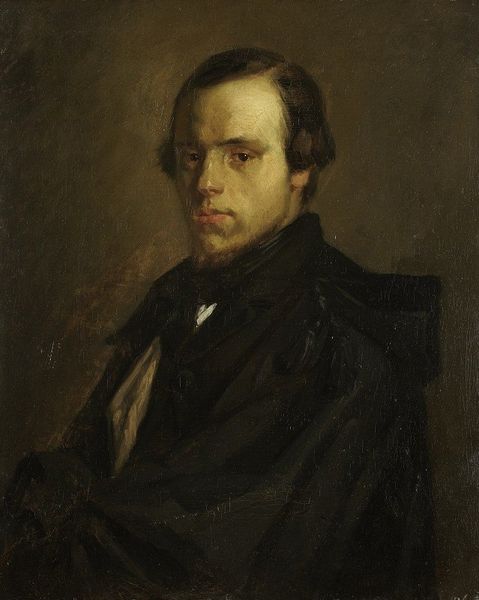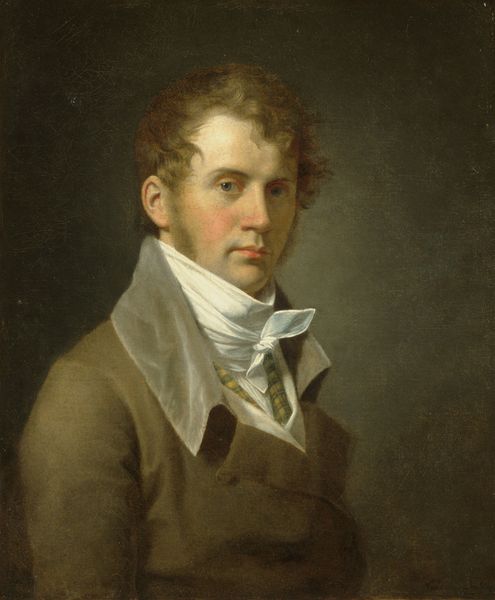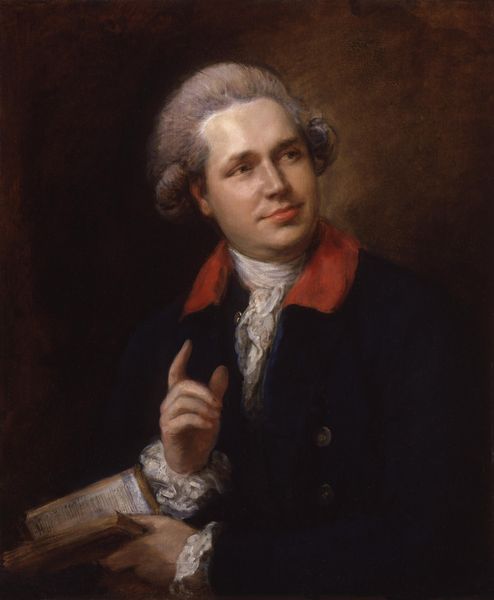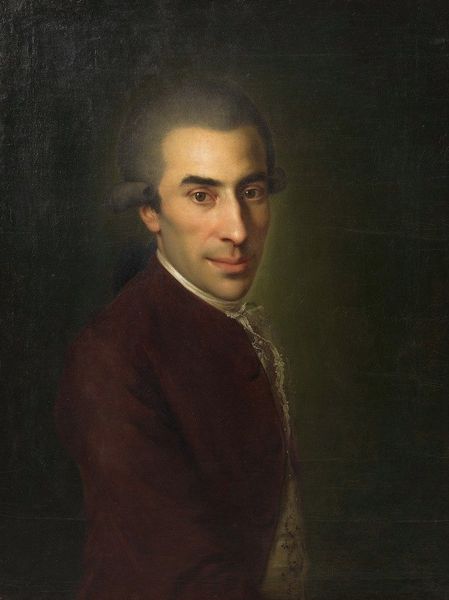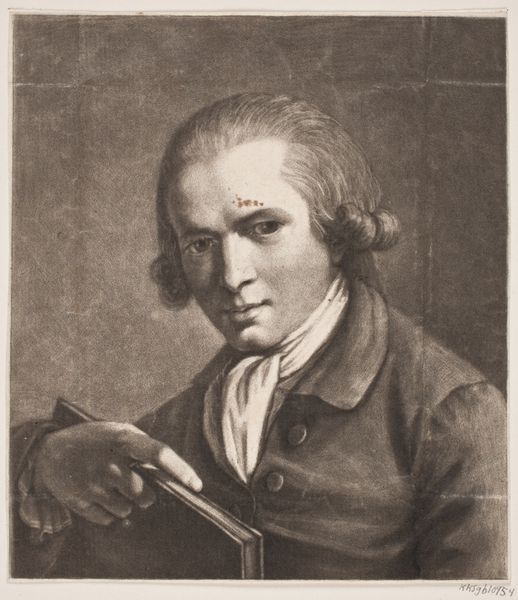
painting, oil-paint
#
portrait
#
neoclacissism
#
self-portrait
#
portrait
#
painting
#
oil-paint
#
academic-art
Copyright: Public domain
Editor: Here we have Antonio Canova’s self-portrait from 1792, an oil painting now residing in the Uffizi. There’s a directness to his gaze that’s really captivating. What's your take on this piece? Curator: Well, placing Canova's *Self-Portrait* within the historical context of 18th-century artistic production is essential. It's neoclassical, a style deeply intertwined with political and social reform, harking back to republican ideals of ancient Rome. Notice how the portrait conveys both the artist's intellect and his status within the art world, evidenced by the tools of his trade in his hand. Who, ultimately, does Canova intend to impress here – other artists or the nobility? Editor: That’s a great point about who he’s trying to impress. I guess I was thinking more about the romantic idea of the artist. It’s almost like he's trying to project some sense of authority? Curator: Precisely. The Neoclassical self-portrait wasn’t merely a representation of the artist’s likeness. It functioned as a visual claim to cultural authority. Consider the strategic role of institutions like the Uffizi; how did their display practices legitimize artists and cultivate particular aesthetic values during Canova's era and beyond? And, relatedly, does seeing this piece in the Uffizi change how we percieve its statement or meaning? Editor: Wow, that’s a fascinating lens to view it through – thinking about not just the subject but also the place where it's exhibited. Curator: Understanding that historical context allows us to read this image with a richer sense of the artist’s position within the complex web of artistic and social influence. Editor: It completely changes my perspective. I appreciate understanding that relationship between artist, artwork, and institution so much more clearly now!
Comments
No comments
Be the first to comment and join the conversation on the ultimate creative platform.
